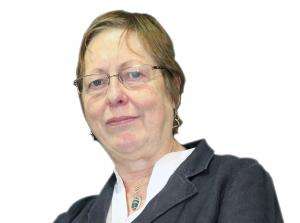Queen Elizabeth II, leadership and change – a social worker’s perspective

Published by Professional Social Work Magazine, 15 September, 2022
Ten days of ceremonies to mark the end of the life of Elizabeth II. We each have our own perspective on seeing the crowds lining the streets as the cortège passes and global leaders are invited to gather for the funeral. As the media coverage around the world reported her death it was clear that as a person, she had that global leadership status.
As part of this process, just as other people experience, the passing from life to death provides a moment for personal stories to be told, recollections of wisdom, laughter, happiness, sorrow and diplomacy.
How many of us have wondered if as members of civil society, we are marking in these very public spaces the passing of a unique individual or the death of a figurehead? The remembrance of a person or the fear of what is to come.
The transferring of the crown from one monarch to another was historically much quicker and more precarious. The predecessors of the Victorians had to move speedily when rivals to succession were more obvious. Even now the efficacy of various methods of changes in political leaders being (s)elected by the majority of the population is constantly the struggle of democracies, some being more open and transparent than others.
I wonder how many readers will have contrasted the heredity process of selecting the Head of State and the small number of Conservative Party members able to vote for the latest UK Prime Minister. How many of the people living in our communities: our neighbours, colleagues, our families and friends, feel disengaged in our local and national governance?
Monarchs inherit leadership. The empires of the past were lucrative and many palaces and treasure were accumulated. Other leaders, such as Gandhi, Bolivar, Luther King, Mandela, Jane Addams, Oliver Cromwell, Clem Atlee and Desmond Tutu, grew into their roles in response to a vision for change.
Elizabeth II presided over the transition from empire to Commonwealth, in part dismantling the colonialism founded on 19th century expansionist economics. This expansion was fuelled by industrial development and social transformation to urban living, which had the consequence of creating a wealthy small elite and an expanding infrastructure that developed into generational poverty and deprivation.
Small countries like New Zealand and Finland, once part of the British Empire and Russia respectively, are now revising their measures of successful economies, moving from measuring success by the GDP to social wellbeing indicators of healthy places to live.
Sustainability of our world in the crisis of climate change, economics and pandemics is now the vision for development in these countries. We too are now at a moment of change.
This transition period provides a sisu moment for us all. Sisu is a Finnish word that describes going through a barrier into a new frontier. It enables us to reflect on what we have learnt from our past and it helps us shape our future visions and co-design and build how we can make those changes and take the actions that leave no-one behind.
In one of my own moments of reflection during this period, I went to Counted, Scotland’s Census 2022 exhibition at the National Portrait Gallery in Edinburgh full of stories about people whose photographs told us about their living conditions to illustrate what is being captured in statistics, not just the recent census, but stretching back through the 70 years of this second Elizabethan age.
As a social worker I relished the stories and listening to the people who gifted us the reality of life to the statistical evidence that helps shape our thinking and actions about what we can do better.
In 1952 the Welfare State, planned during the Second World War, and legislated for in the post-war government by Clem Atlee and his ministers, was taking shape with the vision of a new age for people in our communities, including universal education, health services and social protection.
A bold vision in the immediate aftermath of war and years of austerity. This was the point at which the second Elizabethan age began. But the pictures in the exhibition walked us through people’s own stories of generational deprivation, health inequality, poverty, discrimination, forced migration – to which we can now add a climate change crisis for our planet’s survival.
By giving depth and life to the statistics, the images provoked thoughts and ideas about how we can achieve a sustainable eco-social world. At the People’s Global Summit in June, UN secretary-general Antonio Guterres urged us to support ‘leaderful’ communities. BASW and IFSW worked with partners from communities, faiths, people with lived experience and professionals from across the globe to develop The People’s Charter for an Eco-Social World. It is now time for us to explore how we can develop leaderful communities.
Examples exist everywhere, just look around you at the leaders in our own communities and networks who are instrumental in helping us achieve positive change. Sustainable change is most effective when it has local ownership, built on mutual trust and good relationships.
People do not want conflict or injustice in their lives. They seek to be respected and treated with the dignity that recognises everyone has a contribution to make to our communities and that we are mutually interdependent. Ubuntu – I am because we are.
